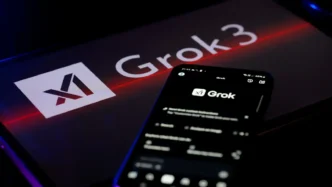NVIDIA is reshaping the future of humanoid robotics. At COMPUTEX 2025, the company introduced a wave of new technologies built around its Isaac platform. These tools are designed to train humanoid robots faster, smarter, and more efficiently. They also unlock major improvements in how robots learn and move in real-world spaces.
This announcement comes as the global humanoid robot market heats up. Forecasts suggest the industry could hit $40 billion by 2035—20 times its current size. With competition growing, platforms like Isaac could define who leads the next robotics revolution.
GR00T N1.5, GR00T-Dreams, and the Power of Synthetic Learning
At the center of NVIDIA’s update is GR00T N1.5, a new foundation model that boosts robot performance in physical tasks. Built on the open GR00T architecture, it allows robots to reason better and act more accurately in complex environments. Robots using this model show major gains in activities like sorting, packing, and organizing.
To speed up training even further, NVIDIA introduced GR00T-Dreams. This blueprint lets developers create synthetic motion data from just one image. It turns video-based tasks into “action tokens”—compact behavior units that robots can quickly learn from. This system cuts training time from months to just 36 hours.
Earlier this year, NVIDIA also released GR00T-Mimic. It improves robot learning through human demonstrations. Now, Dreams builds on that by generating brand-new movement patterns using NVIDIA’s Omniverse and Cosmos platforms. Together, they offer a powerful mix of real-world and simulated training.
NVIDIA is also enhancing its simulation stack. Isaac Sim 5.0 now offers synthetic data generation and will soon be open-source. Isaac Lab 2.2 adds new training environments. Cosmos Reason and Cosmos Predict 2 help reduce hallucinations and improve the quality of AI-generated data. On top of that, NVIDIA released 24,000 real motion trajectories to boost training sets for GR00T models.
Real-World Adoption and a Hardware Stack Built for Robotics
Companies aren’t waiting to take advantage of this. Robotics leaders like Agility Robotics and Boston Dynamics are already working with Isaac. Agility is training its Digit robots with Isaac Sim. Boston Dynamics is improving movement planning using the Isaac Lab framework. These tools allow developers to test more, train faster, and deploy robots with less risk.
Others are joining in. Foxlink and Foxconn are using GR00T-Mimic to boost motion accuracy. NEURA and XPENG Robotics are preparing household and industrial bots with Isaac Sim. Skild AI is building general-purpose robot intelligence using Isaac Lab, and General Robotics is baking Isaac into its core AI platform. Even AeiRobot’s ALICE4—a humanoid that follows natural language commands—is powered by GR00T.
To support all this progress, NVIDIA rolled out Blackwell-powered systems for robot development. These include RTX PRO 6000 GPUs built into servers from Dell, Cisco, HPE, Lenovo, and more. For high-load training, the GB200 NVL72 system offers up to 18x performance gains and is available through DGX Cloud.
At the edge, NVIDIA launched Jetson Thor. This high-performance AI platform brings real-time decision-making directly into the robot. It’s ideal for machines that need to react instantly in real environments.
The Takeaway: Isaac Platform Is Building the Nervous System for Physical AI
NVIDIA is removing the biggest hurdles in humanoid robotics—slow training, limited generalization, and scarce data. Its Isaac platform now spans open-source software, synthetic training data, advanced simulations, and cutting-edge AI chips. Together, these components form a complete system to build intelligent robots.
As CEO Jensen Huang put it, “From AI brains for robots to simulated worlds and AI supercomputers, NVIDIA provides the building blocks for every stage of robotics development.”
The future of robotics isn’t just faster. It’s smarter, more adaptable, and already underway.













